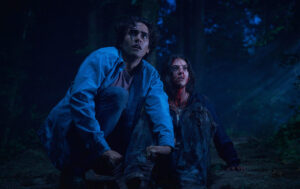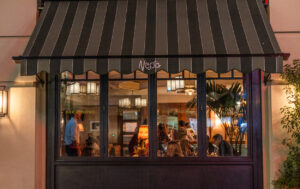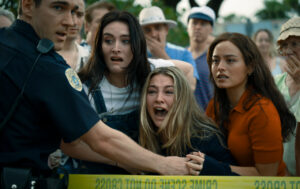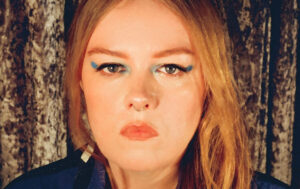Natural Perception at Aretha Campbell Fine Art

Even by its very name – an obvious play on Darwin’s famous treatise – this group exhibition, showing at Aretha Campbell Fine Art in Soho (in conjunction with Narcissus Arts), seeks to make us question the lines between art and nature.
The question is first tackled by Phoebe Dickinson’s striking Curiosity Cabinet: pencil drawings of shells and starfish as well as maps of far-off lands evoke the earliest adventurers and their quest for knowledge, yet at the bottom of the collage we see a snipped photograph of the artist from her own travels. These may be discoveries of the old, but they are now shaped by more modern means.
Nearby, Adeline de Monseignat’s Incubator – a collection of glass spheres, blown darkly with colours of swirling storm and half-covered in sand – is ethereal, unnerving almost, an ode to something known and yet wholly unknowable.
Upstairs, both Mat Chivers and Emilie Pugh use even more abstract allusion to question our assumptions about nature. Chivers’ Perceptual Ecology pieces present images from science and art, which are inverted, repeated or misshapen, until real and synthetic begin to blur. Pugh’s works, Refraction and Chronology of Breath give substance where we might not normally see anything. Working both with ink and photography, her images are wispy and subtle, yet conjure much depth out of the faintest flickers.
The material on the top floor leans more towards photography, and works with more brute force than what has gone before. Guy Archard’s Michelle presents us with a profile picture onto which is traced a chalky line of peaks and troughs, much like the outline of a mountain range. The line might represent a shared moment, or the heartbeat of a relationship still running through our artist’s head.
Sam Pelly’s Into the Quiet is perhaps the most arresting image of all. The artist’s photograph of dense forest has incredible depth, each tree standing alone, proud, and yet obviously part of a community.
Seemingly a meditation on the power of nature to constantly drive and regenerate, Pelly’s work is a fitting end to an exhibition that is both superbly-sourced and cleverly curated. Just like those trees, each of our artists was answering the same question, but each was able to provide something quite different. What better testament to the fact that we are all part of Darwin’s vision of nature, and yet enriched by judgements and adjustments of our own?
Martin Frimet
Natural Perception is at Aretha Campbell Fine Art until 21st April 2013. For further information visit the gallery’s website here.























Facebook
Twitter
Instagram
YouTube
RSS